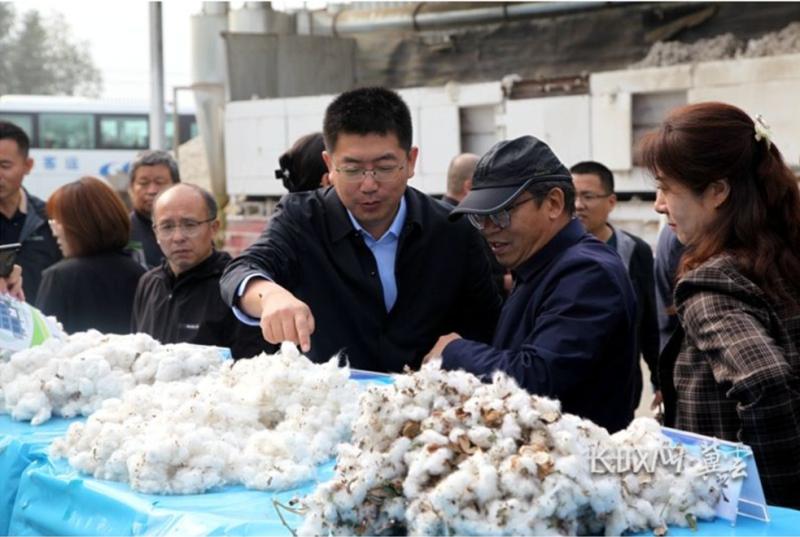Recently, at the exhibition of new cotton varieties and on-site observation of mechanical harvesting in coastal saline alkali land of Fengnan District, Tangshan City, looking at the promising growth and good machine harvesting effects of the new cotton variety Jimian 262, director ZHANG Jianhong said, “This is the second year of showcasing machine harvested cotton on the saline alkali land in Fengnan, and the results are very good. Machine harvested cotton planting on saline alkali land can be considered a success!”

In recent years, due to factors such as climate, policies, markets, and technology, cotton farmers' planting intentions have continued to decline, as well as the planting area and total output, which seriously affecting the development of the cotton industry in Hebei Province. In response to the problem of low efficiency in cotton cultivation, ZHANG Jianhong led the molecular breeding research team of the Institute of Cotton to work on the "agricultural chip" of seeds, making the cultivation of new cotton varieties a top priority. The team foresaw the trend of mechanization in cotton production in Hebei Province and early carried out the breeding of cotton varieties suitable for mechanization. With high yield as the premise, high-quality, stress resistant, and light simplification as the main focus, they created germplasm resources and cultivated new cotton varieties suitable for mechanization and with excellent comprehensive characteristics. They have successively bred 11 new cotton varieties suitable for high-yield, high-quality, disease resistant, and machine harvesting, including Jimian 262, Jimian 1518, and Jimian 126, And integrate supporting cultivation techniques. Team members go deep into the main cotton producing areas to provide scientific and technological services, guiding cotton farmers to achieve high yield and efficiency in cotton production.

ZHANG Jianhong introduced that in recent years, the molecular breeding research team of the Cotton Research Institute has combined molecular breeding technology with conventional breeding methods to conduct research on the genetic laws of important traits. By constructing multiple types of populations and developing molecular markers and genes related to fiber quality, yield, and resistance traits, differential expression analysis and functional verification of genes related to yield, fiber quality, and resistance have analyzed the molecular mechanisms of related traits. Through transgenic and gene editing methods, new cotton germplasm has been created and new varieties cultivated. “Cotton is an important economic crop that combines' fiber, oilseed, and feed '. Hebei Province is an advantageous production area for cotton in China. In the new situation, to promote the development of the cotton industry, scientific research work needs to be more in-depth and continuously solve each' bottleneck 'problem.” Zhang Jianhong said that the team will focus on biological breeding and use technologies such as genetically modified organisms, gene editing, and whole genome selection to create new germplasm, Breaking through key breeding technologies, cultivating major new varieties, and contributing to achieving technological self-reliance and winning the battle for seed industry transformation.

(Source from )